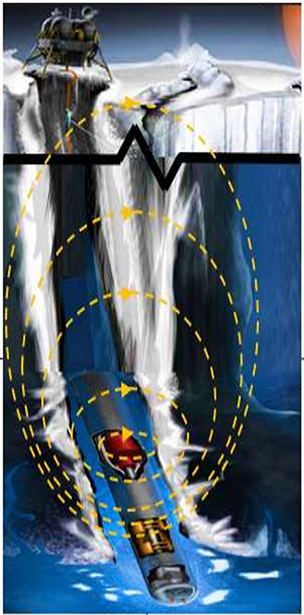Robert Romanofsky
NASA Glenn Research Center
A mission to the under-ice ocean of Europa is one of the highest priority missions for NASA. Galileo magnetometer measurements and other observations suggest a deep layer of electrically conductive fluid beneath the surface. Concepts for a probe to melt through the 5 to 10 km thickness of briny ice to reach the buried ocean have been proposed. Model predictions for magnesium sulfide concentrations vary but a conductivity range between 0.1 and 3 S/m seems reasonable. Conventional communications links that rely on propagation of an electromagnetic field cannot penetrate – even if the sea ice conductivity is only 0.1 S/m. The electric field attenuation would exceed 100 dB/km even at very low frequencies.
We propose “magneto-inductive” technology. Magneto-inductive signals differ from electromagnetic signals because the electric field is suppressed. The magnetic field is a non-propagating quasi-static field that can penetrate a highly conductive medium. And, the magnetic field can be modulated to encode information hence it can be used for communications. `But the magnetic field strength will degrade as distance cubed (independent of the medium so long as the medium is not magnetic) so a very sensitive receiver technology is needed to pick up the weak signal after penetrating several km of briny ice. We intend to develop a magneto-inductive communication system based on an extremely high-sensitivity superconducting quantum interference device (SQUID) receiver and quasi-static magnetic field transmitter. Preliminary calculations indicate that we should achieve ≈kbps with a modest transmitter and relatively small antennas (coils) using a SQUID-based receiver.
This effort represents a potentially disruptive communications technology to enable a mission to the Europa ocean and other ocean worlds.































